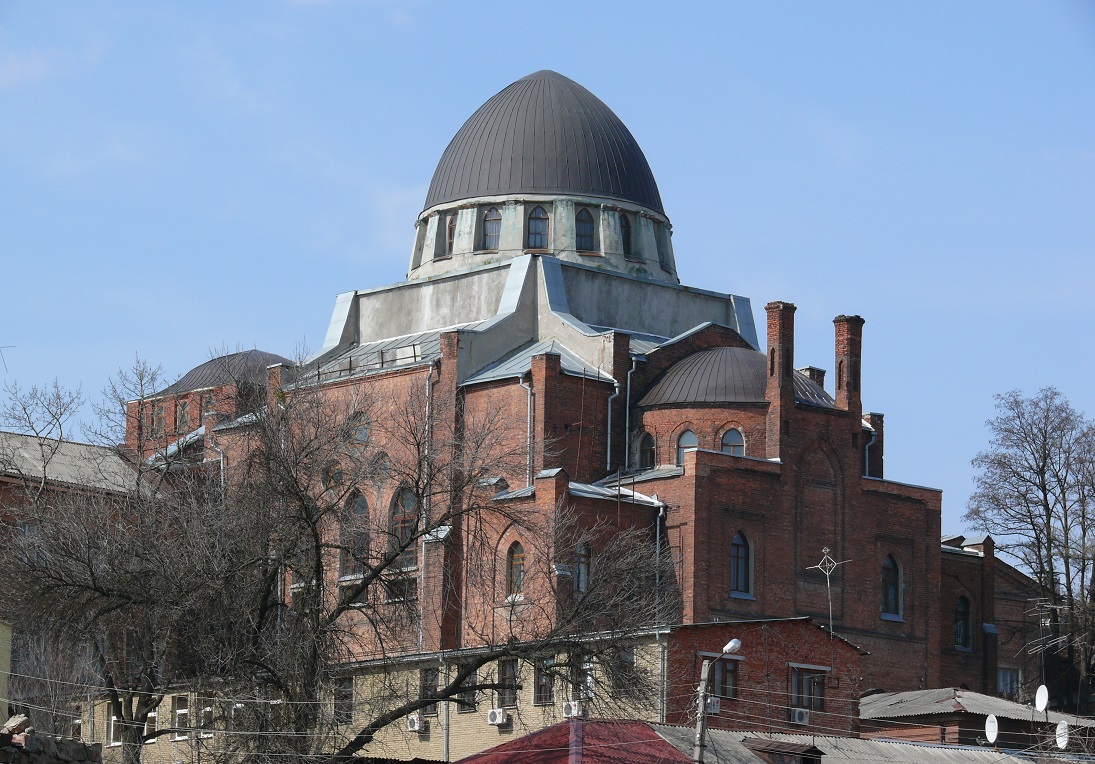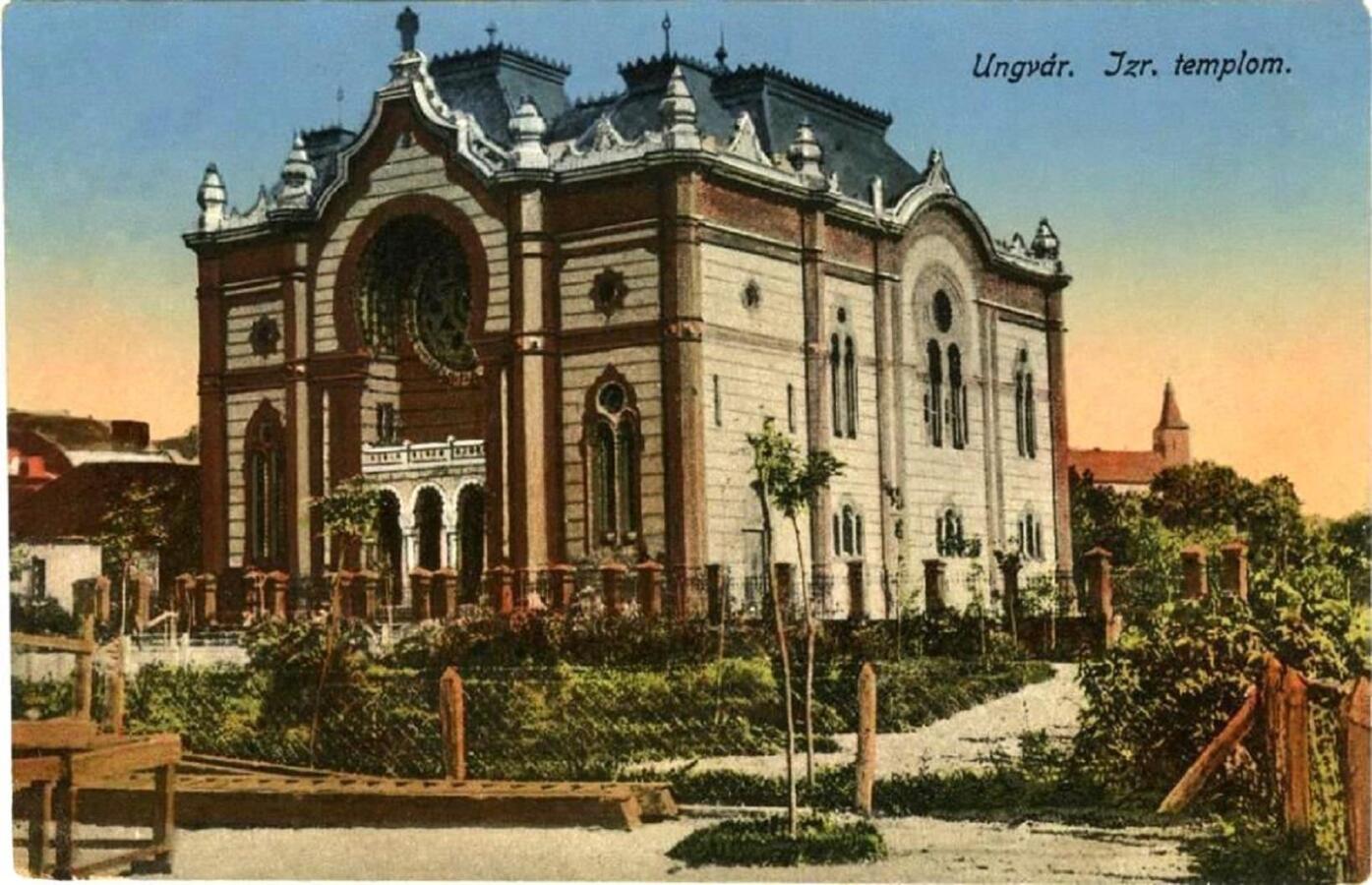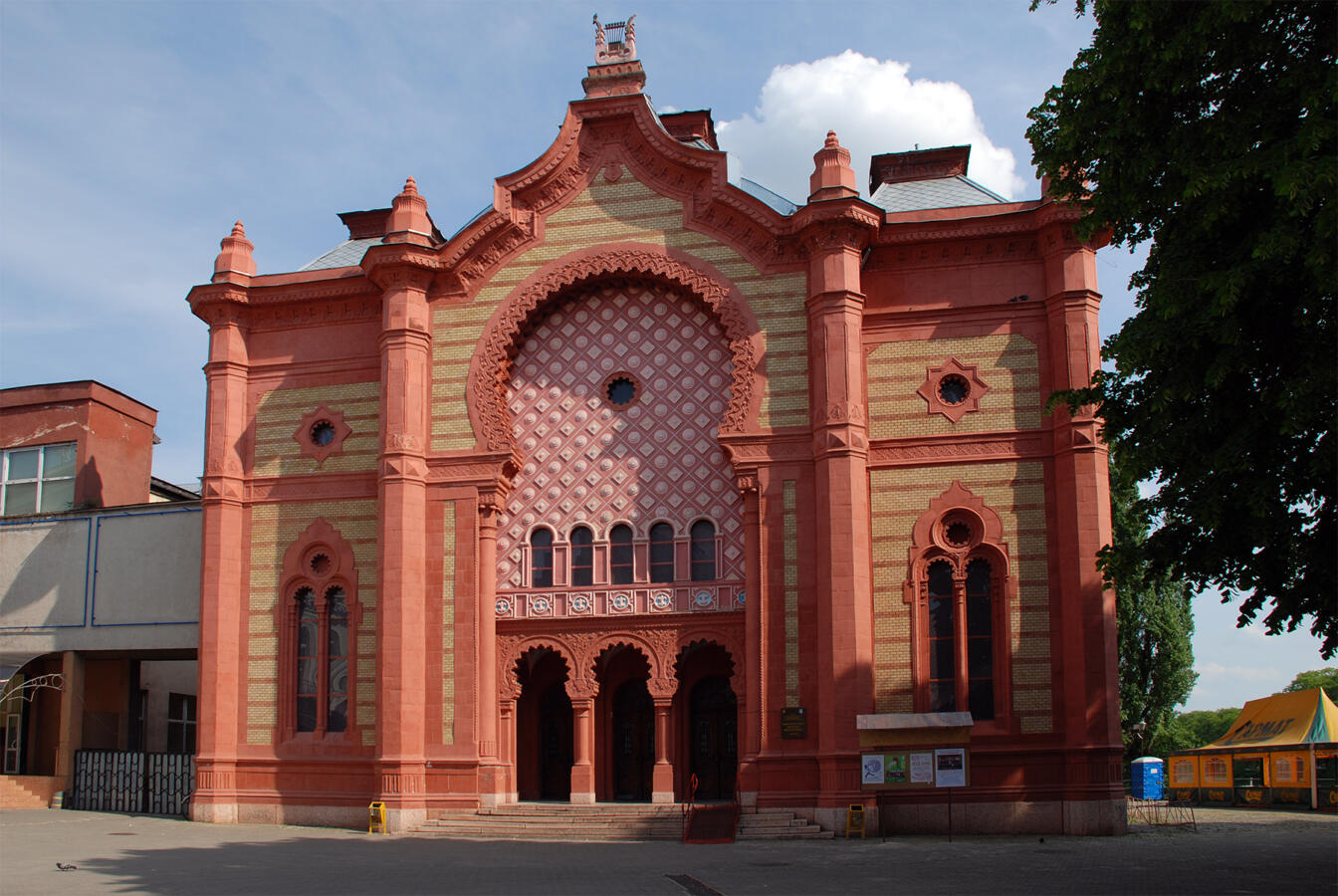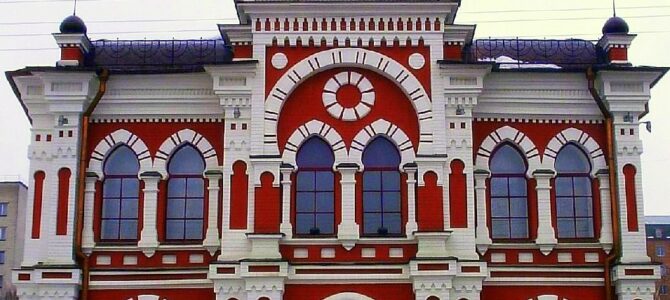by Abby Seitz
The borders of modern-day Ukraine encompass parts of what was once the Polish-Lithuanian Commonwealth (1569-1795), the Austro-Hungarian Empire (1867-1918), the Russian Empire (1721-1917) and the former Soviet Union (1922-1991). The history of Jews in Ukraine goes back over 1,000 years; sources in the Cairo Genizah note a Jewish presence in Kiev, the capital of Ukraine, as early as 930 CE. Throughout Ukraine’s history, Jews could be found in major cities and in shtetls alike.
Many synagogues were built from the 13th through the 18th centuries, especially in the region of Galicia. Few of these structures remain. Synagogues were a common target during pogroms which hit with full force throughout the 19th century; additionally, many Jewish community buildings were destroyed by Nazi forces during World War II.
In the second half of the 20th century, nearly all surviving synagogues were confiscated by the Soviet Union and used for a variety of state purposes, ranging from storage warehouses to opera houses. Upon declaring independence in 1991, the newly sovereign state of Ukraine returned many synagogues back to remaining Jewish communities. Today, a small number of historical synagogues have been restored and continue to serve as hubs of Jewish prayer and education. Other synagogues are permanently gone, with only a plaque nearby to remind passersby of the Jewish community that once gathered there.

Kharkov synagogue

Great Synagogue of Ungvar (Yiddish name of Uzhgorod) in 1915. The synagogue was constructed in 1904 and served the city’s 85,000 Jews, nearly all of whom were murdered in the Holocaust.

The building that once housed the Great Synagogue of Ungvar (meaning Uzhgorod) still stands in modern-day Uzhgorod, Ukraine, near the border with Slovakia. Uzogorod was the capital of Czechoslovakia’s province of Carpathian Ruthenia before it was returned to Hungary and then annexed by Stalin and made part of the Ukrainian Soviet Socialist Republic. After World War II the building was converted into a concert hall.
Full text here.


